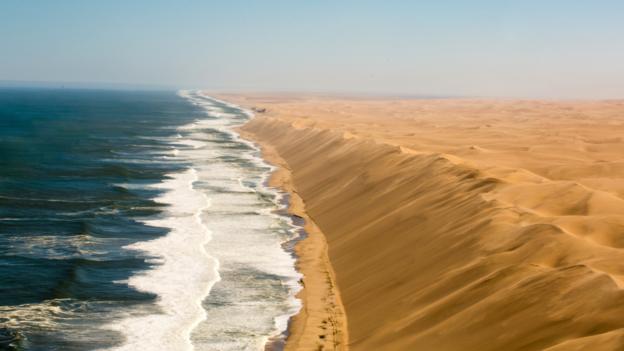Snow-capped mountaintops are the first thing visitors may spot from the airplane windows when they arrive in the Norwegian archipelago of Svalbard – that is, if they arrive during the bright half of the year, when the midnight sun can be seen nearly 24/7. During the other half of the year, darkness reigns, and the Northern Lights often flicker and dance overhead.
Located 800km north of mainland Norway in the middle of the Arctic Ocean, Svalbard is full of superlatives: it’s the world’s northernmost year-round settlement; it’s home to the world’s northernmost university, church and brewery; and it’s one of the few places in the world where anyone can live. In fact, of the nearly 2,400 residents who live in Svalbard’s capital Longyearbyen, almost a third are immigrants, originally hailing from more than 50 different countries. That’s because citizens of any country are welcome to settle in Svalbard without a visa as long as they have a job and a place to live.
It’s believed the Vikings were the first to explore the islands in around 1200, though Dutch explorers were the first to pay a documented visit while trying to find the Northeast Passage to China in 1596. The following centuries brought walrus and whale hunters from England, Denmark, France, Norway, Sweden and Russia. In 1906, American businessman John Munro Longyear established the archipelago’s first coal mine, which remained Svalbard’s primary industry during most of the 20th Century. These days, the main activities on Svalbard are tourism and environmental and ecological research.
The islands went ungoverned until 1920, when, in the aftermath of World War One, a treaty that guaranteed Norway’s sovereignty over Svalbard was signed by nine countries – today, 46 countries are part of the agreement. The treaty stipulates the territory cannot be used for military purposes and makes Norway responsible for preserving the islands’ natural environment. The most striking feature of the agreement, however, is the unique clause that states there must be no distinction between the treatment of Norwegians and non-Norwegians.
Longyearbyen is where most people settle when they move to Svalbard. There are only 40km of roads on the islands and no roads between different settlements – which are only accessible by boat in the summer or by snowmobile in winter. Anyone who leaves the city limits usually carries a rifle in case they encounter a polar bear. After all, the archipelago’s roughly 3,000 polar bears outnumber its 2,926 humans.
Despite being open for anyone to live, Svalbard is not the most ideal place to be born – or even die. There are no hospitals for pregnant women, and if someone dies, the local government requires the body to be flown or shipped to mainland Norway. Burials have not been allowed in the archipelago since the 1950s because the islands’ permafrost – a thick layer of ground that remains completely frozen throughout the year – not only preserves bodies but sometimes pushes corpses out if they are not buried deep enough.
Svalbard’s permafrost and year-round low temperatures – the average high is just 7C in summer – also proved ideal for the installation of the Global Seed Vault, which stands just about 3km away from Longyearbyen’s main road. It has stored more than 980,000 seeds from across the globe since 2008 as a backup in case of a global cataclysm that causes all crops to fail.
But, as temperatures rise, even the vault might not be completely safe. In 2017, its entrance tunnel was flooded after part of the permafrost melted. Longyearbyen was not designed with rainwater in mind and mudslides and avalanches have recently become a threat. The average temperature in Svalbard has risen by 4C since 1971, five times quicker than in the rest of the planet – making it the fastest-warming place in the world.
(Video by Will Francome; text by Luana Harumi)
This video is part of BBC Reel’s Arctic Stories playlist.
Join more than three million BBC Travel fans by liking us on Facebook, or follow us on Twitter and Instagram.
If you liked this story, sign up for the weekly bbc.com features newsletter called “The Essential List”. A handpicked selection of stories from BBC Future, Culture, Worklife and Travel, delivered to your inbox every Friday.



























